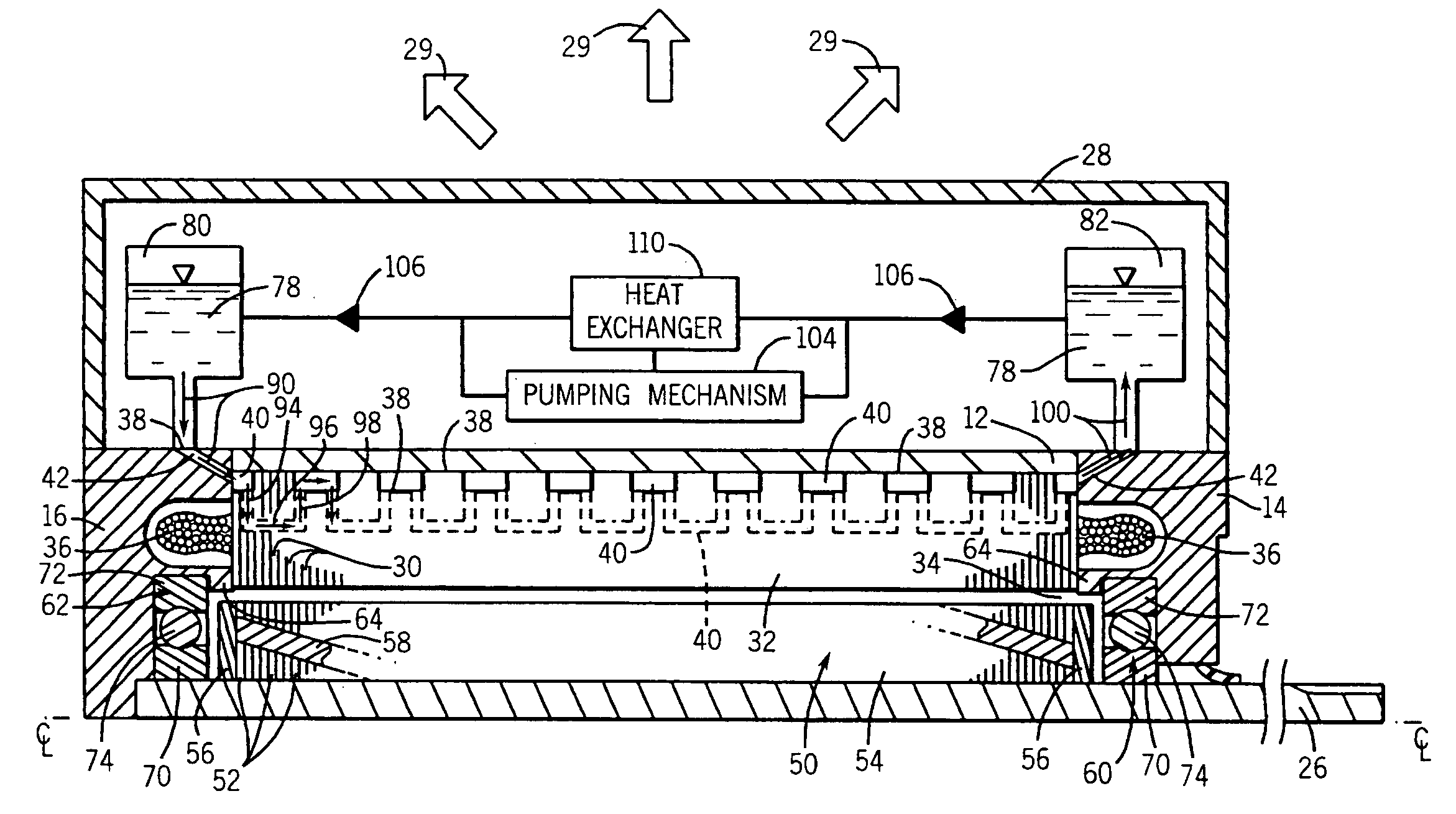Lamination stack cooling path
- Summary
- Abstract
- Description
- Claims
- Application Information
AI Technical Summary
Benefits of technology
Problems solved by technology
Method used
Image
Examples
Embodiment Construction
[0032] As discussed in detail below, embodiments of the present invention provide apparatus and methods for cooling electric machines having lamination stacks. Although the discussion regarding the present invention focuses on electric motors and generators, the present invention also affords benefits to a number of applications in which the cooling of a lamination stack is a concern. Accordingly, the following discussion relates to exemplary embodiments of the present invention and, as such, should not be viewed as limiting the appended claims to the embodiments described.
[0033] Turning to the drawings, FIG. 1 illustrates an exemplary electric motor 10. In the embodiment illustrated, the motor 10 comprises an induction motor housed in a motor housing. The exemplary motor 10 comprises a frame 12 capped at each end by drive-end and opposite drive-end endcaps 14 and 16, respectively. The frame 12 and the endcaps 14 and 16 cooperate to form the enclosure or motor housing for the motor...
PUM
 Login to View More
Login to View More Abstract
Description
Claims
Application Information
 Login to View More
Login to View More - R&D
- Intellectual Property
- Life Sciences
- Materials
- Tech Scout
- Unparalleled Data Quality
- Higher Quality Content
- 60% Fewer Hallucinations
Browse by: Latest US Patents, China's latest patents, Technical Efficacy Thesaurus, Application Domain, Technology Topic, Popular Technical Reports.
© 2025 PatSnap. All rights reserved.Legal|Privacy policy|Modern Slavery Act Transparency Statement|Sitemap|About US| Contact US: help@patsnap.com



